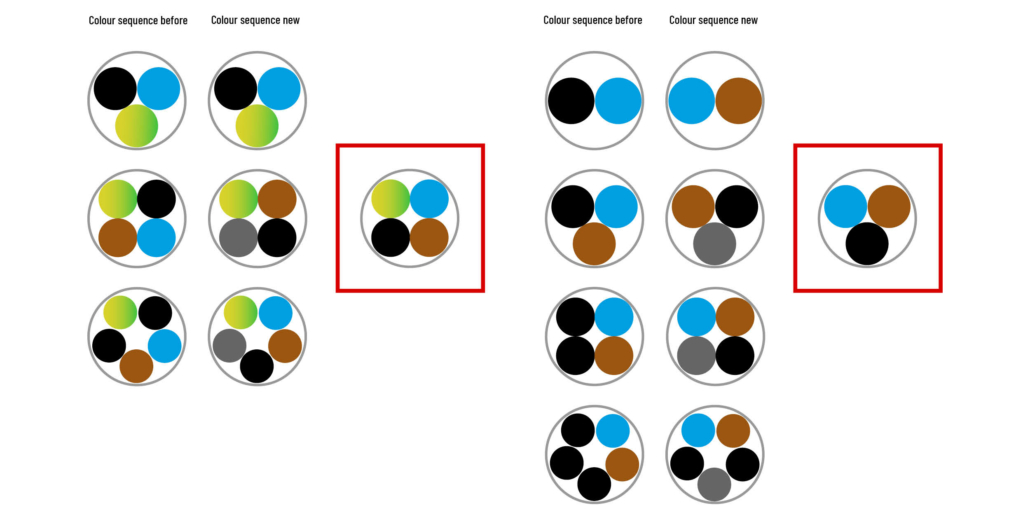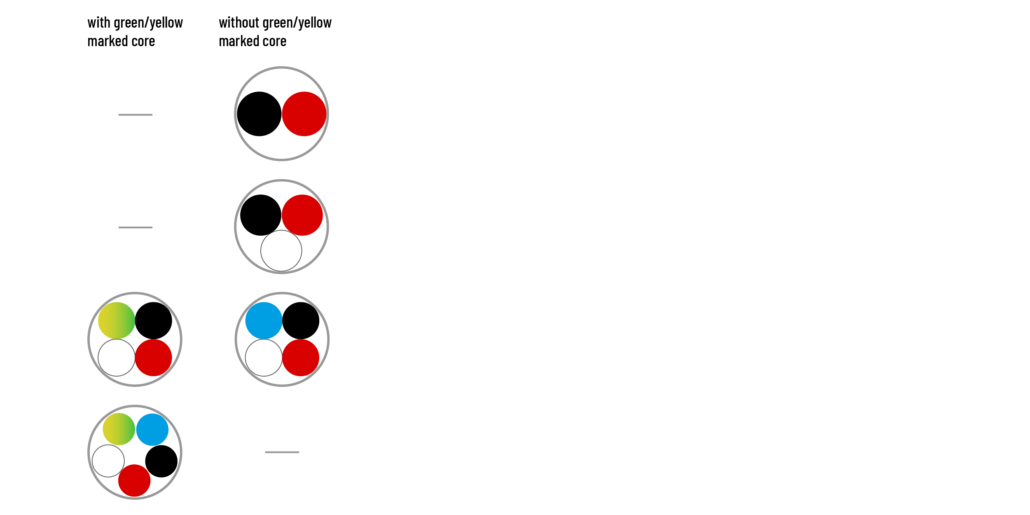Labelling of Power Cable Cores acc. to VDE 0293-308
Essential points of the norm
- introduction of the core colour “grey” for an outer conductor
- maintenance of the core colour “green-yellow” for the protective conductor and “blue” for the neutral conductor
- no other colour than “blue” is allowed to be used for the neutral conductor
Suspension information
Each builder of a plant has to determine already existing cables and wires and their function as well as their core colour (outer conductor, neutral etc.) during an initial examination. With the aid of these gained information further connections have to be made.
During the initial examination it has to be found out if the motors have the right rotating field and if there is a clockwise rotating field at the three-phase AC current socket.
- Recommendations / requirements regarding the determination of colours – as far as specifications are existing, contained in DIN VDE 0100-510.
Up to now there is no determination or recommendation of this norm regarding the correlation of colour and conductor marking (L1, L2, L3).
One recommendation may be the orientation to the frequently applied assignment: L1 = black / L2 = brown / L3 = grey. - Regardless of missing assignment, it is recommended to use a consistent assignment for the same object.
- When extending an already existing plant, the new norm has to be deployed from the point of extension.
This applies universally and not only for the colours of the cores. From the point of extension on, colours have to be combined if they are varying.
There is no demand which colour has to go with which other colour. - Problems can only occur if existing electrical plants with “mechanical readjustment/ electrocode zeroing” (PEN conductor < 10mm²) were put up and for the old plants two-core cables with grey PEN conductor were used as the "standard". Here it is allowed to combine the grey core of the new cable with the grey core (PEN conductor) of the existing old cable ! At such an extenstion point, depending on the connecting condition, the green-yellow core or the blue core of the new cable has to be connected with the grey PEN conductor.
Typical applications for three-core conductors with the colour code brown / black / grey
- connection toggle switch
- series switch
- SELV power circuits
- control circuits, with some reservations
Typical applications for four-core conductors with the colour code green-yellow / brown / black / grey
- connection three-phase motor
- circuits
- control circuits
Labelling of Power Cables acc. to VDE 0293-308
Only admissible in specific applications !!
See DIN VDE 0198:1999-10:
There it is determined that the blue core is allowed to be used as the outer conductor if no neutral conductor is needed in this circuit and if there is no danger of confusion.
Does not apply in Austria !!

